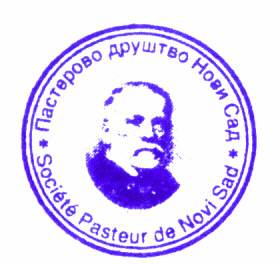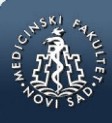md-medicaldata
Main menu:
- Naslovna/Home
- Arhiva/Archive
- Godina 2024, Broj 1
- Godina 2023, Broj 3
- Godina 2023, Broj 1-2
- Godina 2022, Broj 3
- Godina 2022, Broj 1-2
- Godina 2021, Broj 3-4
- Godina 2021, Broj 2
- Godina 2021, Broj 1
- Godina 2020, Broj 4
- Godina 2020, Broj 3
- Godina 2020, Broj 2
- Godina 2020, Broj 1
- Godina 2019, Broj 3
- Godina 2019, Broj 2
- Godina 2019, Broj 1
- Godina 2018, Broj 4
- Godina 2018, Broj 3
- Godina 2018, Broj 2
- Godina 2018, Broj 1
- Godina 2017, Broj 4
- Godina 2017, Broj 3
- Godina 2017, Broj 2
- Godina 2017, Broj 1
- Godina 2016, Broj 4
- Godina 2016, Broj 3
- Godina 2016, Broj 2
- Godina 2016, Broj 1
- Godina 2015, Broj 4
- Godina 2015, Broj 3
- Godina 2015, Broj 2
- Godina 2015, Broj 1
- Godina 2014, Broj 4
- Godina 2014, Broj 3
- Godina 2014, Broj 2
- Godina 2014, Broj 1
- Godina 2013, Broj 4
- Godina 2013, Broj 3
- Godina 2013, Broj 2
- Godina 2013, Broj 1
- Godina 2012, Broj 4
- Godina 2012, Broj 3
- Godina 2012, Broj 2
- Godina 2012, Broj 1
- Godina 2011, Broj 4
- Godina 2011, Broj 3
- Godina 2011, Broj 2
- Godina 2011, Broj 1
- Godina 2010, Broj 4
- Godina 2010, Broj 3
- Godina 2010, Broj 2
- Godina 2010, Broj 1
- Godina 2009, Broj 4
- Godina 2009, Broj 3
- Godina 2009, Broj 2
- Godina 2009, Broj 1
- Supplement
- Galerija/Gallery
- Dešavanja/Events
- Uputstva/Instructions
- Redakcija/Redaction
- Izdavač/Publisher
- Pretplata /Subscriptions
- Saradnja/Cooperation
- Vesti/News
- Kontakt/Contact
 Pasterovo društvo
Pasterovo društvo
- Disclosure of Potential Conflicts of Interest
- WorldMedical Association Declaration of Helsinki Ethical Principles for Medical Research Involving Human Subjects
- Committee on publication Ethics
CIP - Каталогизација у публикацији
Народна библиотека Србије, Београд
61
MD : Medical Data : medicinska revija = medical review / glavni i odgovorni urednik Dušan Lalošević. - Vol. 1, no. 1 (2009)- . - Zemun : Udruženje za kulturu povezivanja Most Art Jugoslavija ; Novi Sad : Pasterovo društvo, 2009- (Beograd : Scripta Internacional). - 30 cm
Dostupno i na: http://www.md-medicaldata.com. - Tri puta godišnje.
ISSN 1821-1585 = MD. Medical Data
COBISS.SR-ID 158558988
RISK EVALUATION IN FRAGILE FRACTURE FORMATION*
PROCENA RIZIKA ZA NASTANAK FRAGILNIH PRELOMA
Authors
Emina Štrangar1, Jelena Zvekić-Svorcan2
1Department of Medical Rehabilitation.Faculty of Medicine, University of Novi Sad, Serbia.
2Special Hospital for Rheumatic Diseases Novi Sad, Serbia.
• The paper was received on 05.05.2016. / Accepted on 12.05.2016.
Correspodernce to:
Jelena Zvekić-Svorcan TA MD, MSc
Department of Medical Rehabilitation.
Faculty of Medicine Novi Sad.
University of Novi Sad, Serbia.
E mail: zvekic.svorcan@gmail.com
*Scientific work was presented at Students Congress of Medical faculty of Novi Sad, March 26, 2016.
Mentor: JelenaZvekić-Svorcan TA MD, MSc
Abstract
INTRODUCTION: Osteoporosis represents bonemineral density deficiency which can lead to fracture. Our aim is to detect patients with high risk of fracturein order to apply the adequate therapy.
AIM: То identify patients with high risk of osteoporosis fracture.
MATERIAL AND METHODS:Prospective studies included 65 patients of both genders aged ≥50. Bonemineral density was measured in all of the patients of hip and lumbar area of the spine.The results are given in absolute numbers and in the form of T score and are interpreted by the current definition of osteoporosis. All patients were asked identical questions from the FRAX questionnaire - model for Italy and all patients signed an agreement to be included in the study. Exclusion factors: pre-menopausal patients, the presenceof some other metabolic disease, and patients who use drugs for osteoporosis. Statistic processing and analysis were done on the computer program SPSS ver.20.tors:
RESULTS: Average age is M=63,4±7,4 years. Most were women 84%, and the Body Mass Index value in 1/3 participants was in normal values. There are no statistically significant risk factors for bigger fractures when there is a T score(p>0.05), and without the T score they are: the number of fractures, glucocorticoids, age, secondary osteoporosis, rheumatoid arthritis, prior fractures and hip fractures that occur in the family (mother or father) (p<0.01) Significant risk factors in care of hip fractures with the T score are: secondary osteoporosis, the number of factors, glucocorticoids, rheumatoid arthritis (p<0.01), while in hip fractures without the T score we find age and prior fractures significant alongside previously listed factors(p<0.01).
CONCLUSION: Frax index is a useful tool for evaluating patients which have a ten year risk for fragile osteoporotis fracture occurrence, even when we do not know bonemineral density value.
Key words
osteoporosis, risk, FRAX, fractures
References
- Zvekić-Svorcan J, Mikov A, Mikov I, Subin-TeodosijevićS. Faktori rizika, lokalizacija i učestalost fraktura kod pacijenata sa smanjenom koštanom gustinom. Zdravstvena zaštita 2011;40(6):64-8.
- Stefanović D, Knežević B, Glišić B, ĆirkovićM.Osteoporoza. MD-Medical Data 2010;2(4):357-360.
- Dubljanin-Raspopović E, Denić-MarkovićLj, Tulić G, Grajić M, Tomanović S, Kadija M,et al. Prevencija preloma kuka u gerijatrijskoj populaciji- neiskorišćena prilika? Vojnosanit Pregl 2012;69(5):420-4.
- Petković Z, Mirković J, NovakovićT, Milinić S, SmiljićLj, NestorovićV,et al. Loše životne navike- faktori rizika za nastanak osteoporoze. Praxis medica 2014;43(4):21-5.
- Karadžov-Nikolić A, Vujašinović-Stupar N, Milišinović S, Bukumirić Z. Analiza faktora koji utiču na učestalost patoloških preloma kod postmenopauzalnih žena sa osteoporozom. Praxis medica 2015;44:33-8.
- Lewiecki EM, Compston JE, Miller PD, Adachi JD, Adams JE, Leslie WD,et al. FRAX® Bone Mineral Density Task Force of the 2010 Joint International Society for ClinicalDensitometry& International Osteoporosis Foundation Position Development Conference. J ClinDensitom. 2011;14(3):223-5.
- Polovina S, Micić D, Miljić D, Milić N, Micić D, Popović V. Indeks za određivanje rizika od preloma kostiju (FRAX skor) u subkliničkom hipertireodizmu. Vojnosanit Pregl 2015;72(6):510-6.
- Siris ES, BaimS, Nattiv. A Primary care use Frax absolute fracture risk assessment in postmenopausal women and older men. Postgard Med. 2010;122(1):82-90.
- Silverman SL, Calderon AD The Utility and Limitations of FRAX; A US perspevtive. CurrOsteoporos Rep. 2010;8(4):192-7.
- Makević-Đurić M, Đurić M .Procena rizika od nastanka velikih osteoporotičnih preloma na nivou primarne zdravstvene zaštite. Zdravstvena zaštita 2012;41:52-7.
- Zvekić-Svorcan J, Filipović K, Stanimirov B, Elez I, Repac V. Značaj indeksa telesne mase u nastanku osteoporoze. Glasnik antropološkog društva Srbije 2013;572(5):49-56.
- Zvekić-Svorcan J, Filipović K, Janković T, Tomašević-Todorović S, Vasić J.Prediktivni faktori za nastanak osteoporoze kod muškaraca. MD-Medica Data 2013;5(3):235-9.
- Grujić V, Martinov-Cvejin M, Ač-Nikolić ,Nićiforović-Šurković. O Epidemiologija gojaznosti odraslog stanovništva Vojvodine. Med Pregl 2005;58:292-5.
- Janković T, Zvekić-Svorcan J, Gojkov-Žigić O. Uticaj glikokortikoidana vrednost koštane gustine kod bolesnika sa reumatoidnim artritisom. Opšta medicina 2013;19:81-6.
- Janković T, Zvekić-Svorcan J, Bošković K.Verifikacija vertebralnih osteoporotičnih preloma uzrokovanih glikokortikoidima. Med Pregl 2014;67:118-122.ž
- Kovačev-Zavišić B, Ičin T, Novaković-Paro ,Medić-Stojanovska M, Bajkin I. Reverzibilnost koštanih promena kod bolesnice sa celijakijom i autoimunskim hipotireodizmom. Vojnosanit Pregl 2015;72(1):72-6.
- Johnell O, Kanis JA, Oden A, Sernbo I, Redlund-Jonhell I, Petterson C, et al. Fracture risk following an osteoporotic fracture. OsteoporosInt 2004; 15(3):175-9.
- Vujasić-Stupar N, Ilić K.Faktori rizika za nastanak postmenopauzne i senilne oste oporoze i mogućnosti prevencije. Arhiv za farmaciju 2009;59:399-410.
- Schneider DL. Management of osteoporosis in geriatric populations. Cerrosteoporos Rep. 2008;6(3):100-7.
- Liberman D, Cheung A. A Practical Approach to Osteoporosis Management in Geriatric Population. Can Geriatr J. 2015;18(1):29-34.
- Epanov VV, Palshin GA, Epanova AA, KomissarovAN,Tomsky MI, SedunovVF,et al. X-ray densitometry and FRAX model in predicting the risk of osteoporosis andlow-energy fractures in postmenopausal women. WiadLek. 2015;68(4):526-8.
- PéntekM,GulácsiL,TóthE,BajiP,BrodszkyV,HorváthC.Ten-year fracture risk by FRAX(®)of women with osteoporosis attending osteoporosis care in Hungary. OrvHetil. 2016;157(4):143-53.
PDF Strangar E. and Zvekic-Svorcan J. et al • MD-Medical Data 2016;8(2) 087-094
 Medicinski fakultet
Medicinski fakultet